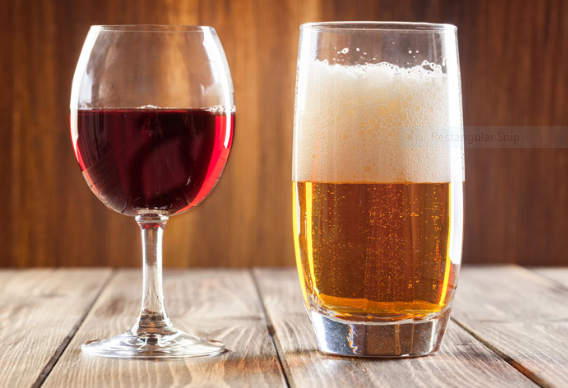What’s Hot, What’s Not in Beer & Wine
When we hit the middle of March last year, everything changed for the beer and wine business.
Restaurants and bars closed, and then some reopened under serious restrictions. Events were cancelled, starting with St. Patrick’s Day celebrations, followed by beer festivals, sporting events and music concerts. Beer wholesalers led the way in the destruction of more than 1 million kegs of unsalable draft beer. Beverage distributors were designated as essential workers and workplace safety precautions became the number one concern for business operators.
Despite all this disruption, year-end volume sales figures for beer and wine wholesalers remained fairly stable. Despite what you may have read elsewhere, overall beer and wine consumption hasn’t changed that much. People are still enjoying their favorite beverage but doing so in different places, mostly at home, and there have also been some marked shifts in consumer preference and behavior.
What’s Hot?
Hard Seltzer sales rose by 160% during 2020. Seltzer is classified as a malt beverage (beer) product and it now accounts for 7.2% of all beer business. Two seltzer brands—White Claw and Truly—have a combined market share of about 74%. Meanwhile, three mega brewers (A-B, Molson Coors and Constellation) have about 20% combined market share but their sights are set on rapid growth during 2021. While seltzer rose fast in 2020, the rest of the beer business lost about 4% in volume (Beer Marketer’s INSIGHTS).
North Carolina’s Big Two Craft Brewers—Sierra Nevada and New Belgium—-enjoyed strong growth during a year when most of the craft business suffered. Sierra Nevada grew by 6.3% while New Belgium grew by 11%. Why? They are established brands with high-quality standards and an established nationwide distribution network. Another winner among large craft brewers was Artisanal Brewing Ventures (ABV), headquartered in Charlotte, with a 9.2% increase for its brands including Victory, Southern Tier and Bold Rock. Sierra Nevada, New Belgium and ABV are an anomaly among others in the craft world. More on that in a moment.
Wine Sales Held Steady last year with a 1-2% increase (Shanken Impact Databank) in spite of the many restrictions placed on the restaurant business. Sparkling wines, especially Prosecco, were the fastest-growing sector with a 20.3% rise in grocery and convenience stores. Families able to work from home saw some expense savings that they were able to use on buying wine for family meals and at-home relaxation.
Modelo Especial had another year of double-digit sales increase and the Mexican import is now the number 5 beer in the U.S., having passed both Corona Extra and Budweiser. The rest of the top 5 is Bud Light, Coors Light, Miller Lite and Michelob Ultra. Also of note, Busch Light (#8 overall) has passed Natural Light as A-B’s #1 economy brand.
Large Packages and Cans became the norm for beer drinkers when the pandemic hit in mid-March. As the restaurant and bar business slowed, beer drinkers turned to grocery and convenience stores to buy beer. Purchasing 12-and 24-packs of cans became the norm for consumers. Two-thirds of all beer is now sold in cans, an increase of more than 7% from 2019. Pre-pandemic, most craft brewers were focused almost solely on draft beer and bottles. COVID-19 changed that as 52% of all craft cases are now sold in cans and draft beer sales dropped by 50% or more.
FY 20-21 Excise Tax Collections for beer and winein N.C. are showing a dramatic rise but don’t be fooled. Beer and wine wholesalers pay excise taxes monthly, based on their sales volume in the preceding month. Because of the pandemic, wholesalers were allowed to delay April-June payments until July 15. The State fiscal year starts July 1, so tax collections were down for FY 19-20 and will be significantly higher for FY 20-21. Beer and wine excise taxes typically generate about $155 million for the State’s General Fund.
What’s Not?
Craft Beer Was Down 7-8% in 2020, according to Brewers Association economist Bart Watson. Since 2010, craft beer had experienced significant growth. Craft had already entered a phase of slower growth by COVID-19 sent craft into a decline. With taprooms closed or restricted, along with an overall slowdown in draft beer, the business model has changed for many craft brewers. Some longtime self-distributing brewers have recently taken on beer distributor partners.
While some established brands like the afore-mentioned Sierra Nevada and New Belgium prospered, many other big names in craft had their worst year in memory. Some things you may not know: The craft beer portfolio of Anheuser-Busch is now number one in the craft world and the Boston Beer Company sells more seltzer, cider, hard tea and kombucha than beer.
The On-Premise Channel is industry-speak for restaurants and bars. Normally, the on-premise accounts for 20-25 percent of a beer/wine wholesaler’s business. We are terribly worried about the severe impact this pandemic has had on our on-premise partners. Many restaurants have already closed with more to follow. As for those that survive, one industry analyst says “(they) will need additional investment. Wine sales through the restaurant channel will not recover to pre-COVID levels in 2021 and, more likely, for many years.”
The post-pandemic world probably won’t be the same. Many changes will become permanent, such as the shift to working from home, the relocation of consumers to the suburbs and an overall change in consumer behavior such as buying groceries online.
